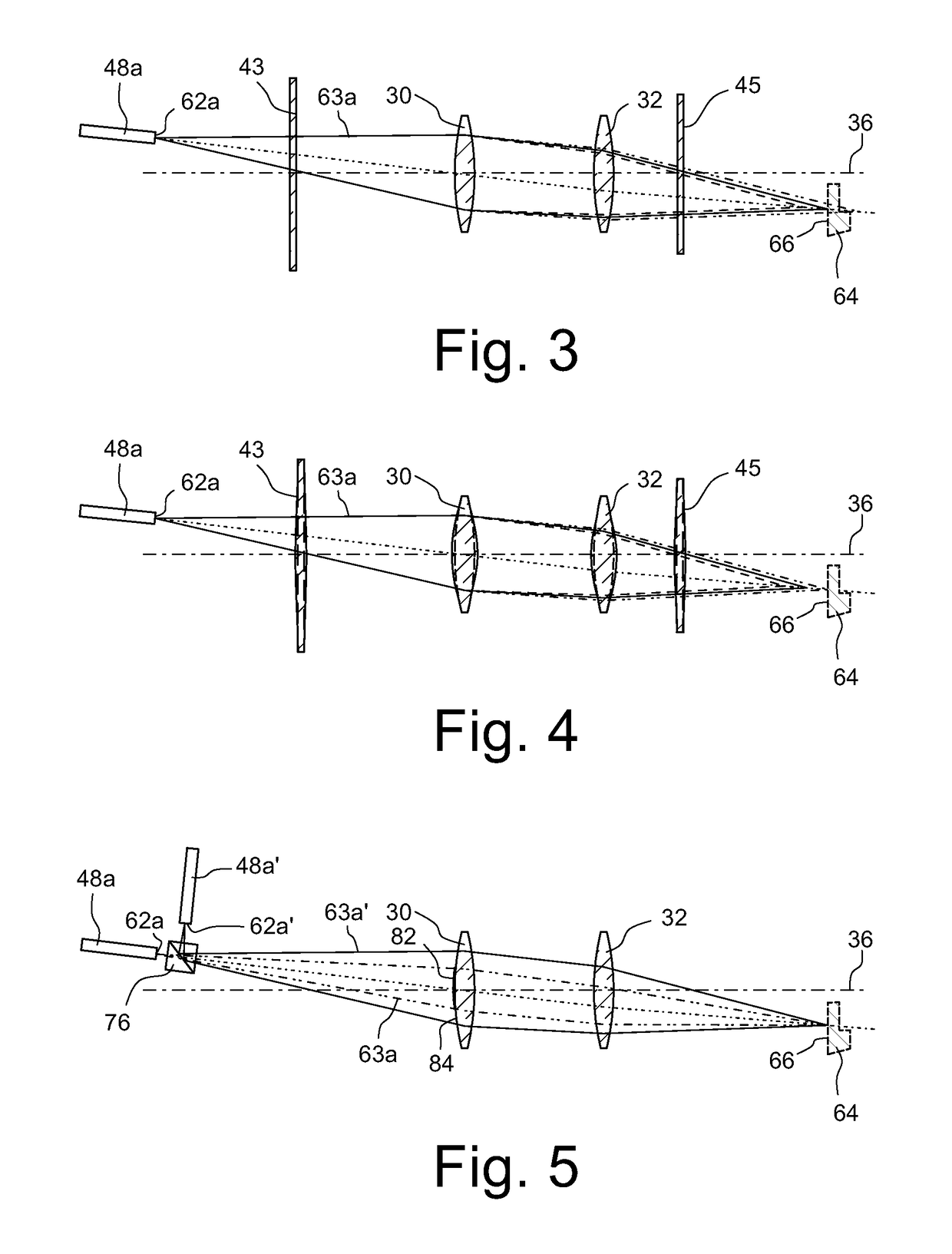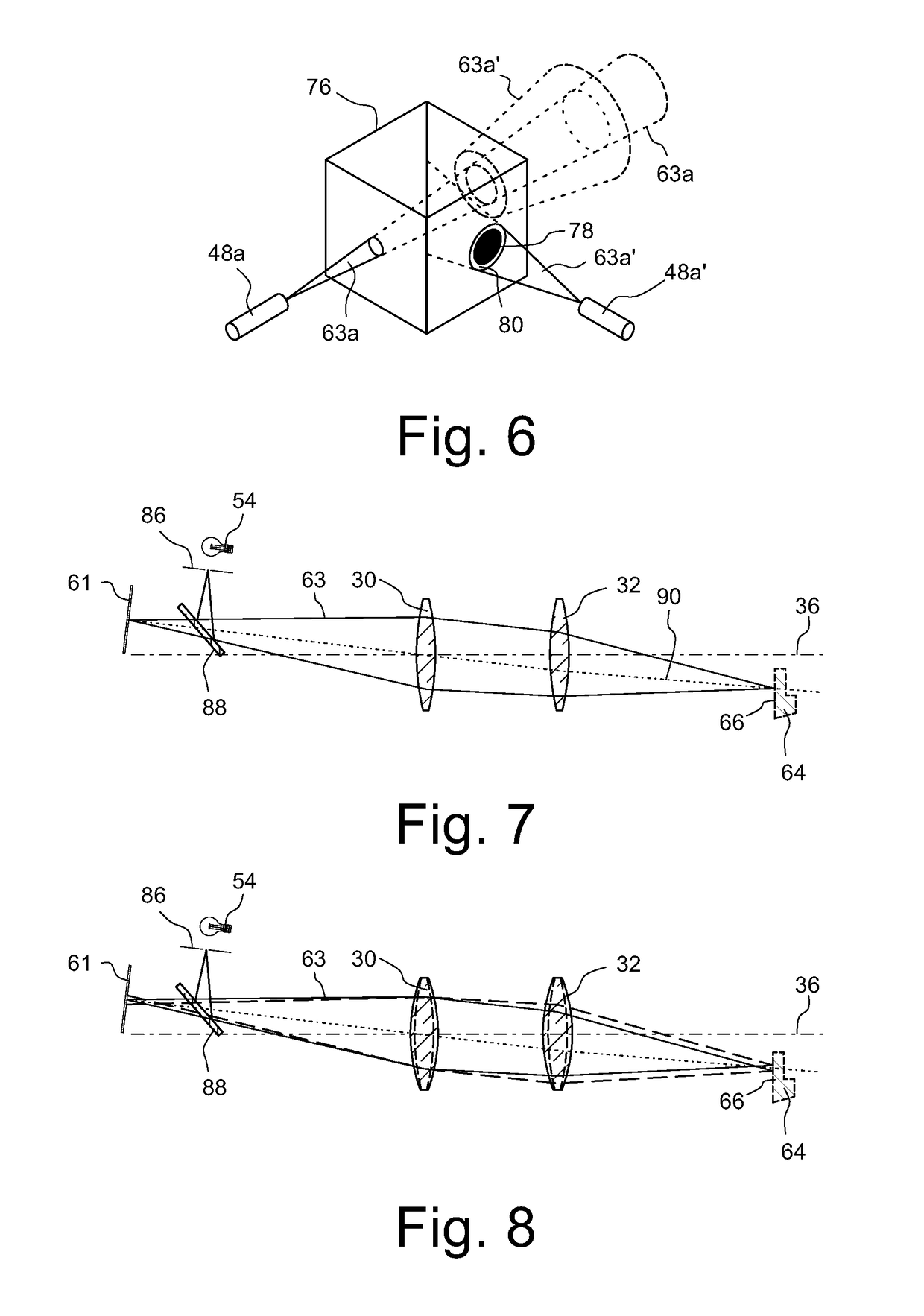Laser machining apparatus with adaptive mirror
a technology of mirror and machining machine, which is applied in the field of laser machining, can solve the problems of affecting cutting procedures, affecting the position and affecting the quality of the finished product, so as to achieve better positioning and shape of the focal spo
- Summary
- Abstract
- Description
- Claims
- Application Information
AI Technical Summary
Benefits of technology
Problems solved by technology
Method used
Image
Examples
Embodiment Construction
[0066]FIG. 1 shows, in a side view, a laser machining apparatus 10 with a robot 12 and with a machining head 14 according to the invention, which has been fastened to a mobile arm 16 of the robot 12.
[0067]The laser machining apparatus 10 includes, in addition, a laser radiation source 18, which in the embodiment that is represented takes the form of a Nd:YAG laser, disk laser or fibre laser. The laser radiation generated by the laser radiation source 18 is fed via an optical fibre 20 to the machining head 14 and is focused by the latter in a focal spot 22. The arm 16 of the robot 12 is positioned in relation to a workpiece 24 in such a way that the focal spot 22 is located at the desired location on the workpiece 24 and the latter can be machined by welding, severing, or in another way.
[0068]Of course, other lasers also enter into consideration by way of laser radiation source 18, for example CO2 lasers, the radiation of which, however, is generally fed to the machining head 14 not ...
PUM
| Property | Measurement | Unit |
|---|---|---|
| diameter | aaaaa | aaaaa |
| diameter | aaaaa | aaaaa |
| focal length | aaaaa | aaaaa |
Abstract
Description
Claims
Application Information
 Login to View More
Login to View More - R&D
- Intellectual Property
- Life Sciences
- Materials
- Tech Scout
- Unparalleled Data Quality
- Higher Quality Content
- 60% Fewer Hallucinations
Browse by: Latest US Patents, China's latest patents, Technical Efficacy Thesaurus, Application Domain, Technology Topic, Popular Technical Reports.
© 2025 PatSnap. All rights reserved.Legal|Privacy policy|Modern Slavery Act Transparency Statement|Sitemap|About US| Contact US: help@patsnap.com



